Most people arrive to the Galapagos Islands via Baltra airport near the island of Santa Cruz. When I first visited 14 years ago, we essentially went straight from the airport to our cruise boat (it was not possible to travel independently in the Galapagos at that time), and didn’t see anything of Santa Cruz beyond the dock. This time I planned to spend 3 days on the island, with Tortuga Bay the first stop on the itinerary.
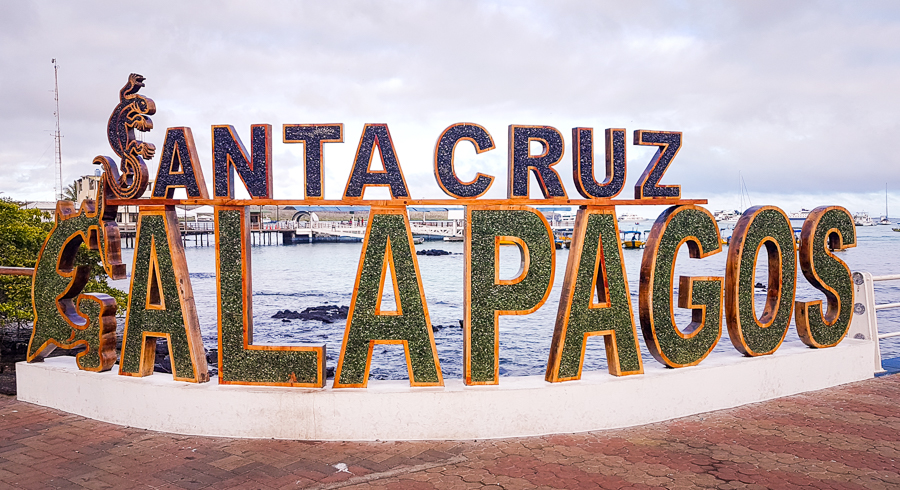
Before setting out, I took a quick detour to the Laguna de las Ninfas – a small tidal lagoon with red and white mangroves (I learned all about mangroves in Nicaragua last year) and a nice little boardwalk.
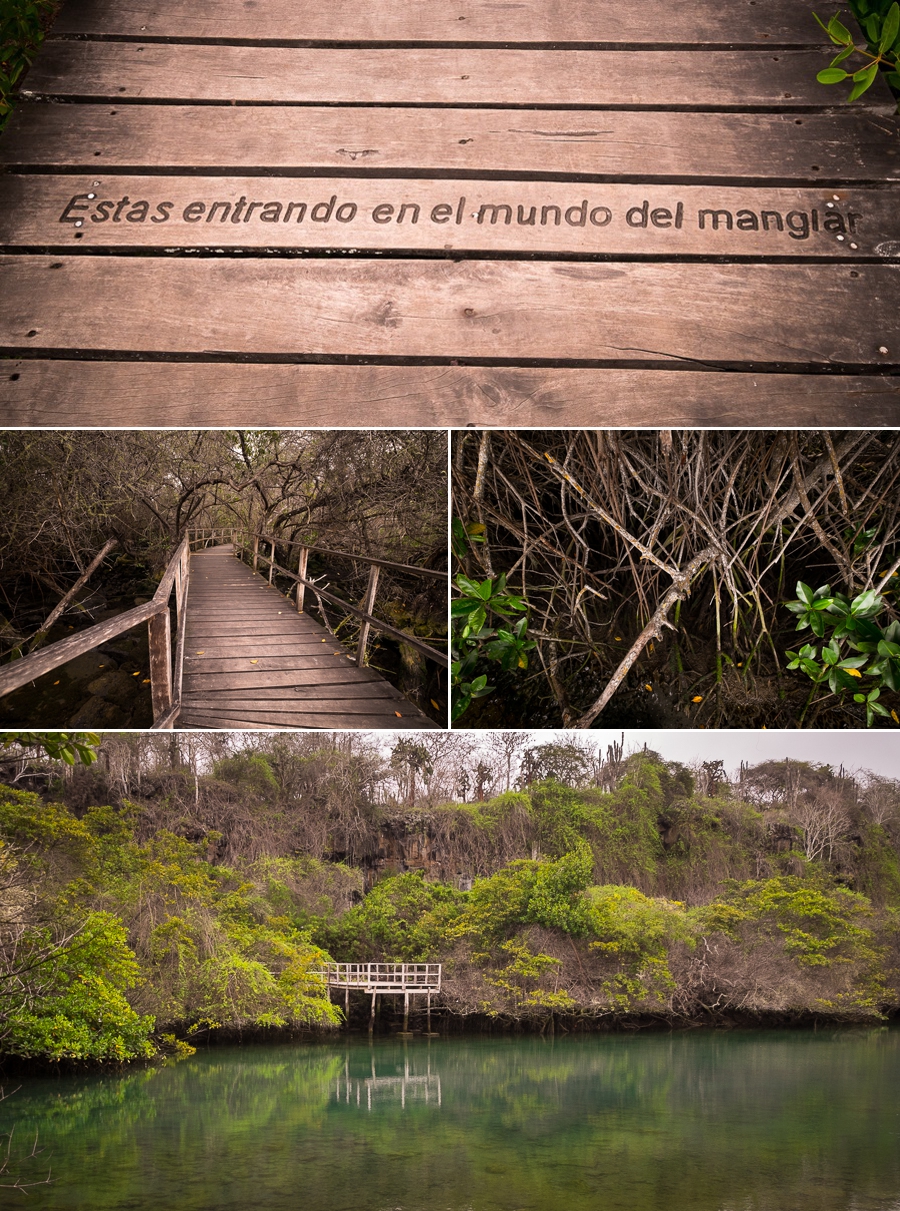
Then started off on the 40 minute hike to Tortuga Bay. They have built a very solid path all the way there, which takes you through the dry vegetation characteristic of the Galapagos Islands, and giant Opuntia cactus. Although found on many of the Islands, Santa Cruz has the tallest specimens of this cactus, which are an important food source for iguanas, tortoises and cactus finches.
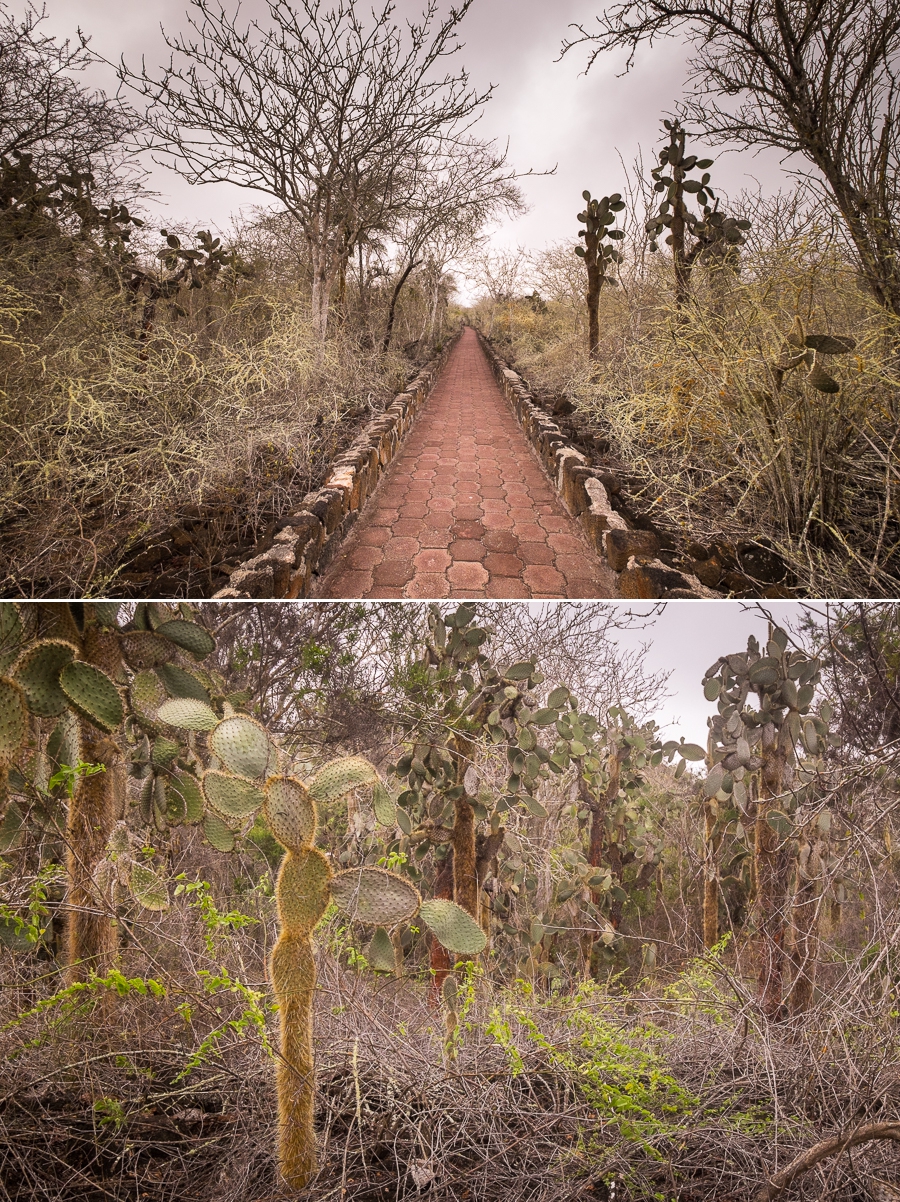
I found it fascinating how the cactus evolves as it grows larger – something that is clearly seen on this hike. It starts off as discrete pads that stack end-on-end and perpendicular to each other (below left). Then, as it grows larger, these seem to “fuse” into a more solid-looking trunk covered in spines, with new pads appearing at more random angles in the upper reaches (middle). And finally, the trunk loses its spines and becomes quite solid and wood-like, with the new pads forming a haphazard jumble at the top (right).
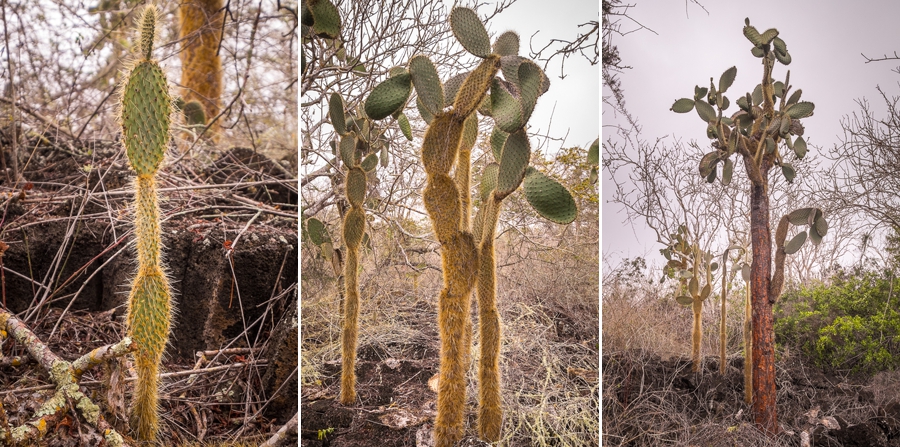
The texture and patterns in these trunks are amazing! I had expected it to feel like a paper-bark tree, but no. It is much more solid than that.
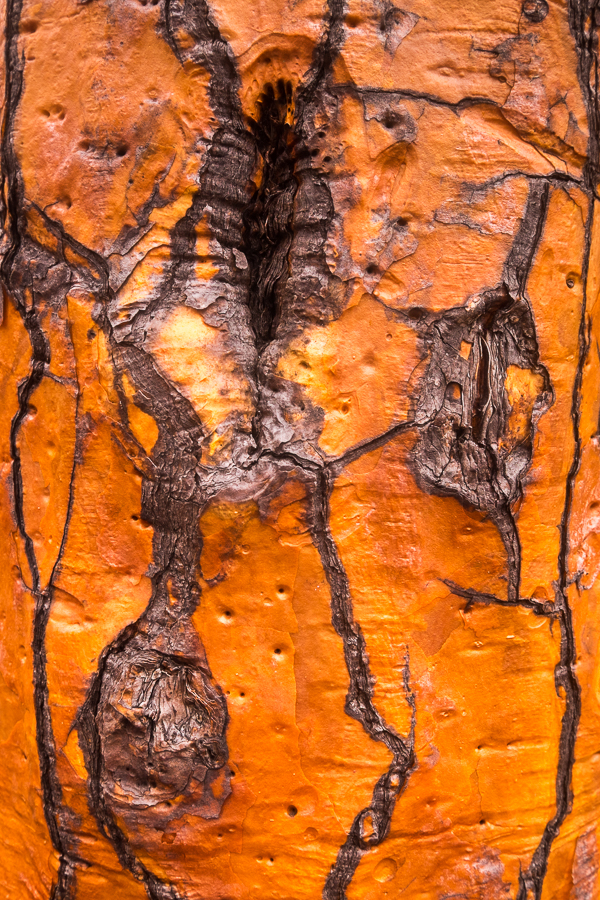
The hiking path eventually deposits you on the long, white, sandy beach of Tortuga Bay. It is a beautiful beach, but unfortunately not one they recommend you swim at.
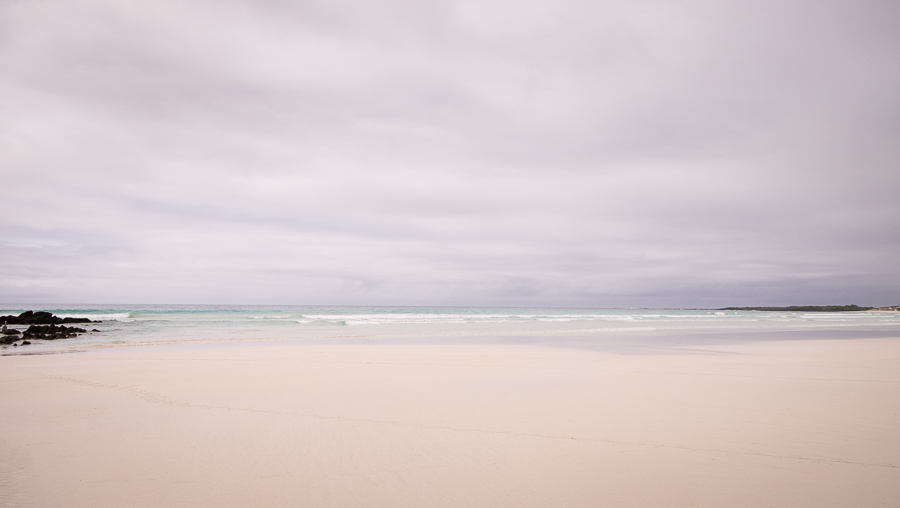
Given that I don’t particularly like swimming anyway, that was fine with me, so I hiked along the beach, stopping to investigate the dark, volcanic rocks along the way.
It was a thrill to see the Sally-Lightfoot Crabs again
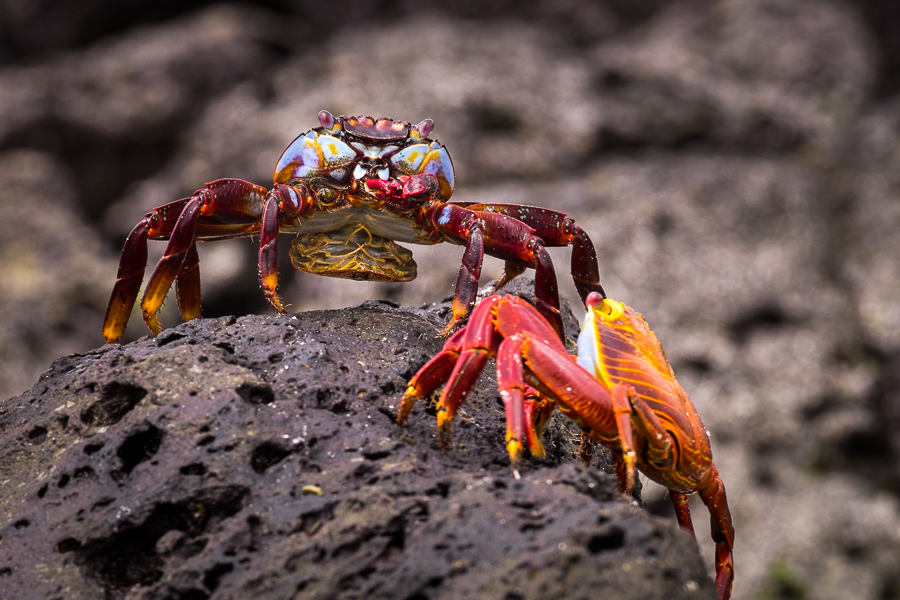
and the Marine Iguanas of course! The Galapagos Islands are the only place in the world where these iguanas are found, and there is something very special about being able to see these creatures in real life.
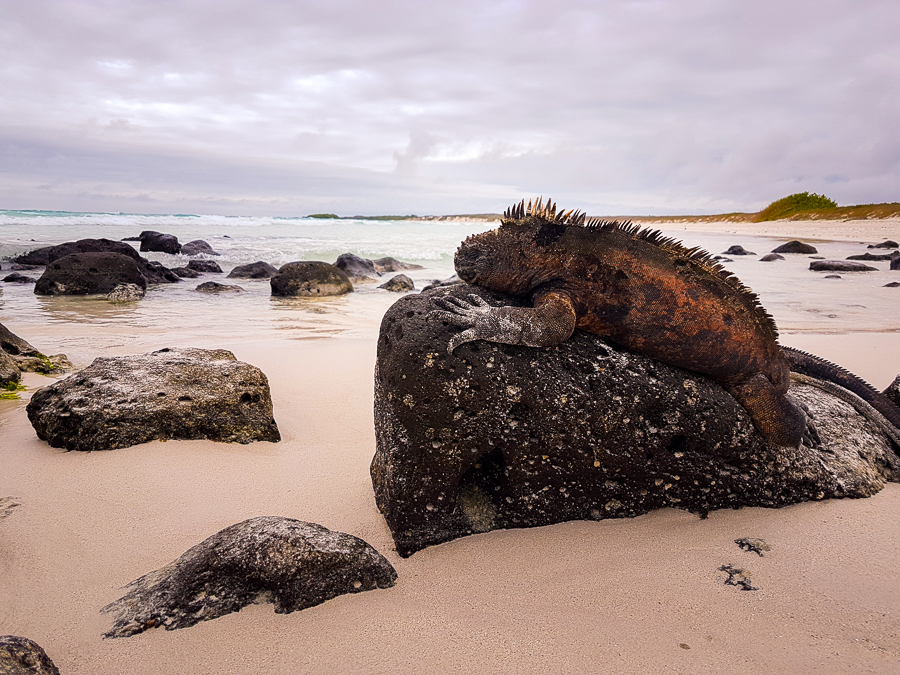
Especially in the water, where their flat tail helps them to swim.
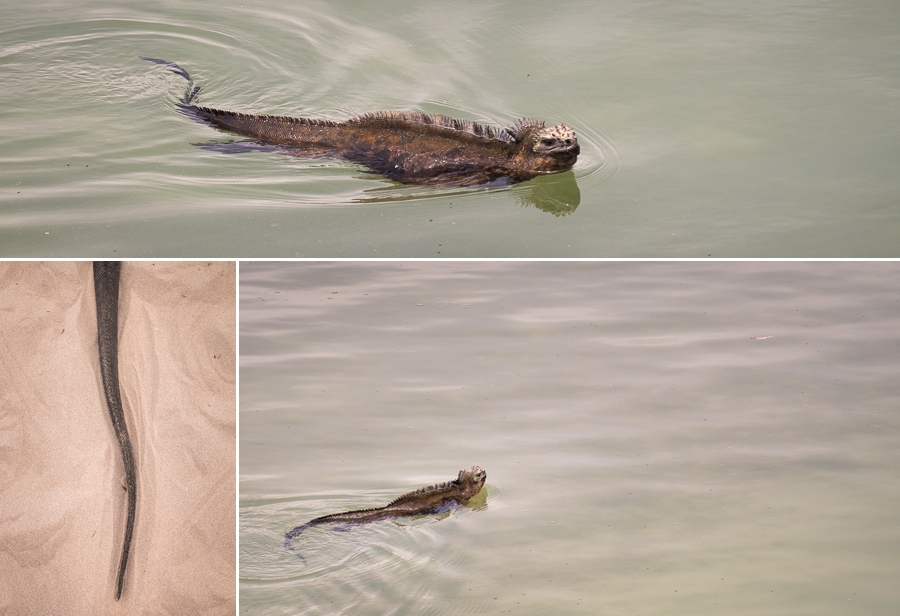
I was lucky enough to find this guy actually eating something (they usually just lie there expelling salt from their nostrils)
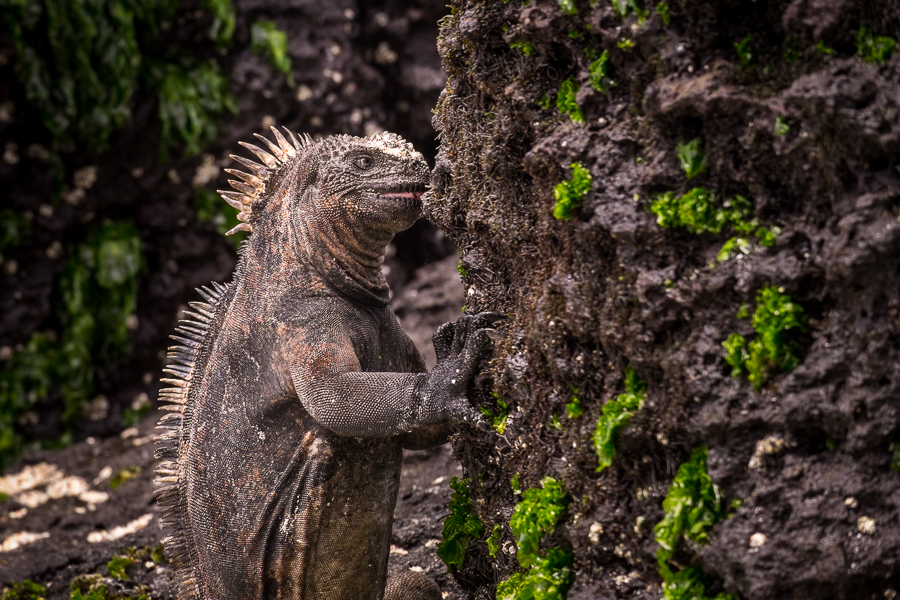
And loved watching them walk along on the beach.

In order to go swimming or snorkeling, you have to walk all the way to the end of Tortuga Bay and cross over to the far more sheltered Playa Mansa.

Given I’m not much of a beach person, I actually preferred exploring the cliff at the end of the beach, with its volcanic rocks and tall Opuntia cacti.

and watching the Frigate birds flying above.

On the hike back to Puerto Ayora, I spent lots of time chasing Galapagos Lava Lizards along the path in an effort to get a good photo, and then headed into town for an icecream – it was a warm walk 🙂

Recommendation
This is the main hike that you can do from Puerto Ayora. And best of all – it is free and you can do it independently.
Time: I spent about 5 hours on this excursion, but depending on whether you wanted to go swimming/snorkeling at Playa Mansa – you could easily spend the whole day.